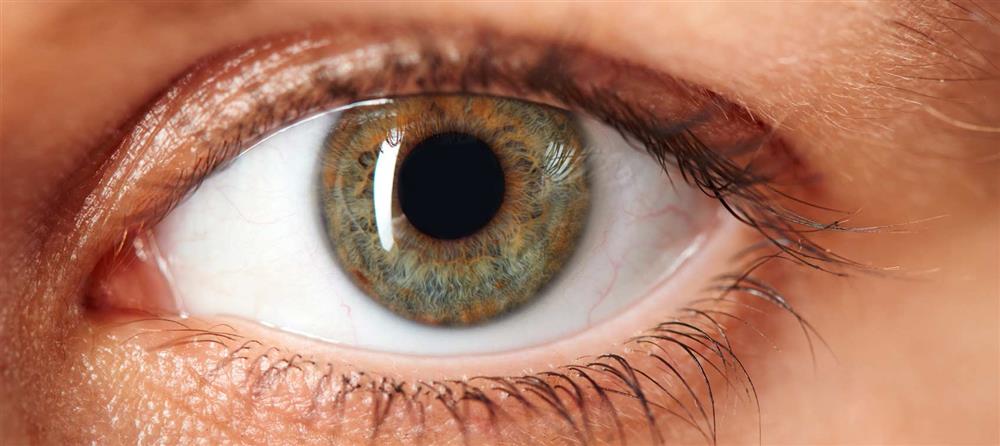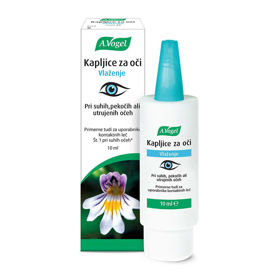According to the assistant. dr. Mojca Urbančič from the Eye Clinic of the University Medical Center in Ljubljana, diabetic retinopathy is the most common late complication of diabetes. It is a major cause of blindness among the working active population in developed countries. The number of patients with diabetes is increasing and it is expected that the incidence of diabetic retinopathy will increase as a result.

About one-third of diabetic patients have diabetic retinopathy, and about one-third of diabetic retinopathy patients have vision-impaired changes. After twenty years of diabetes, almost all patients with type 1 diabetes, and about 60% of patients with type 2 diabetes, have signs of diabetic retinopathy.
Main risk factors
The most common risk factors for the onset and progression of diabetic retinopathy are uncontrolled diabetes, arterial hypertension, and hyperlipidemia.
Diabetic retinopathy is a disease of the retina and small veins that feed on it.
Patients with diabetic retinopathy are often without problems in the earlier stages of the disease. As the disease progresses, vision deterioration may occur. The most common causes of vision impairment are diabetic macular edema and proliferative diabetic retinopathy.
Patients with diabetic macular edema they have blurred vision, poor perception of colors, contrasts ... These patients have difficulty with reading and other tasks and activities that require good visual acuity. Due to poor eyesight, they cannot drive a car, they depend on foreign help, they are often depressed, and their quality of life deteriorates. They find it difficult to cope with daily activities, the risk of mortality is higher. Proliferative diabetic retinopathy is an advanced stage of diabetic retinopathy in which, due to extensive ischemia resulting from retinal capillary obstruction, new vessels, called neovascularizations, are formed. These can lead to extensive bleeding into the vitreous or retinal detachment. Both conditions can worsen vision in a very short time, "emphasizes the assistant. dr. Mojca Urbančič.
Can we prevent diabetic retinopathy?
“Diabetic retinopathy cannot really be prevented, but good diabetes management and good control of other risk factors, such as hypertension and hyperlipidemia, can slow its onset and progression. Screening of diabetic patients is very important for early detection of the disease and timely initiation of treatment for diabetic retinopathy. Proper screening of diabetic patients and appropriate and timely treatment of diabetic retinopathy can reduce the risk of severe visual impairment by more than 90%. "
When do you start treating diabetic retinopathy?
"Initial changes in the background of the eye are not treated, such patients are only carefully monitored. We start treatment when it is indicated, ie when diabetic macular edema worsens vision or when proliferative diabetic retinopathy develops or there is a high risk of developing it. "
How good are the experts at the Eye Clinic of the University Medical Center in Ljubljana compared to the experts from other eye clinics in Europe?
"We have a lot of knowledge in this area, which we also use in our daily work with patients. The results of our research in the field of diabetic retinopathy are published in reputable international ophthalmological journals and foreign experts cite the results of our research. The results of our treatment are comparable to the results of experts in eye hospitals in developed countries. Patients are treated in accordance with modern international guidelines and Slovenian patients have access to the same treatment as patients in developed countries.
In order to reach every patient in Slovenia, we are improving our screening system for early detection of patients with diabetic retinopathy. Early detection of diabetic retinopathy is very important to prevent severe complications and vision loss. With regular screening of patients with diabetes, it is possible to detect patients whose vision is endangered and treat them in a timely manner. "
How successful are the operations? In which cases do you decide not to operate?
“We operate on complications of proliferative diabetic retinopathy and, in some cases, changes that affect the development of a certain form of diabetic macular edema. The success of the operation is significantly affected by the condition of the eye before the operation. In most cases, good anatomical results can be achieved, and functional results largely depend on pre-existing tissue damage due to diabetes. In certain cases, surgery is postponed because less invasive therapeutic interventions are available that may be just as effective.
We do not opt for surgery when we believe that we cannot improve the condition of the eye and restore vision. In such cases, the operation would mean additional risk or even worsening of the condition instead of improvement, and of course we do not want that. "
The real story: "Keep the risk in mind!"
Mrs. Mikec Jožica, a retired pediatric nurse, has been living with diabetes for 36 years. When she found out she had diabetes, she and her family suffered a severe blow. She was barely 25 years old and had a hard time coming to terms with being hit by this serious illness. Compared to today's times, the therapy was much more difficult then, as the insulins were poor and unrefined, the needles were thick and large, she had to boil them herself, as they were intended for multiple use. Diabetes changed her life. Four years ago, doctors also diagnosed her with diabetic retinopathy.
When Ms. Mikec found out about diabetic retinopathy, she was very scared. She knew she could go blind as a last resort. Her eyes and her sight have long been at the center of what was going on in her life. Ophthalmologist dr. Cvetka Oberč reassured her and explained that she had good chances for successful treatment. At the Eye Clinic of the University Medical Center in Ljubljana, where, according to Ms. Mikec is well followed by advances in treatment worldwide, she has been treated with biologics due to diabetic retinopathy. She was very concerned, as the treatment is done by injections, which are injected directly into the eye. She felt uncomfortable before each new injection.
She was in good hands
"After a thorough examination by an excellent eye doctor, dr. Mojca Urbančič at the Eye Clinic in Ljubljana calmed down, because dr. Urbančič nicely explained the whole course of treatment. I am very grateful to her and I appreciate her not only for her high professional knowledge, but also for the friendly attitude towards patients, who are sometimes awkward and impatient, which can prolong the treatment process, "he is aware. Mikec.
Ms. Mikec's health was rapidly improving. She received eight injections of the drug into her left eye and four into her right. At the start of treatment, she visited an eye clinic every five or six weeks and felt improvement after each visit. When the condition of diabetic retinopathy was at its worst, she had only 75 percent vision left, and today her vision is one hundred percent. "Every time I entered the office of dr. Urbančič, she received me with a smile, which was a sign that the situation had improved again, "she confided her pleasant memories. Mikec.
Life goes on
Due to the difficult diagnosis and frequent visits to the eye clinic, he has it. Mikec, as he says, has a different attitude to the eyes today. “I am an optimist by nature and I have a lot of will. I overcome the difficulties I experience calmly and maintain a cheerful outlook on life. I trust in the favorable course of all things. I try and tell myself that I will be able to, ”he says. Mikec, who is never bored despite her retirement, as she is very socially active. She is the vice-president of the Association of Diabetics Novo mesto, where due to her rich knowledge - she has a lot of it, as she was a nurse and has been a diabetic patient for many years - she also works as a professional because she wants to help diabetics.
Source: mojDOKTOR, www.mydoctor.si












 Facebook
Facebook
 Instagram
Instagram
 info@moja-lekarna.com
info@moja-lekarna.com

